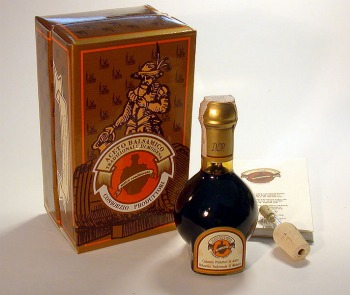 Italy offers all kinds of food-related adventures to travelers, from the unique dishes available on menus throughout the country to festivals dedicated to particular food products to tours of the places where specific Italian products are made. One interesting tour that’s really easy to arrange is a visit to a balsamic vinegar factory in Modena.
Italy offers all kinds of food-related adventures to travelers, from the unique dishes available on menus throughout the country to festivals dedicated to particular food products to tours of the places where specific Italian products are made. One interesting tour that’s really easy to arrange is a visit to a balsamic vinegar factory in Modena.
Calling the places where balsamic vinegar (aceto balsamico in Italian) is made “factories” is a bit misleading, as these aren’t warehouse-sized buildings with conveyor belts. In Italian, a place where they make vinegar is an acetaia (pronounced ah|cheh|TAH|yah), and Modena and Reggio Emilia are two excellent options if you want to see first-hand where this incredible stuff is made.
Since Modena and Reggio Emilia are where traditional balsamic vinegar comes from, any balsamic bearing the name “Aceto Balsamico Tradizionale di Modena” or “Aceto Balsamico Tradizionale di Reggio Emilia” has E.U. protected status – this means it must be made in a certain way and come from specific places. This is, as you might imagine, the more expensive end of the balsamic spectrum – you can find cheaper balsamic vinegar, some of which does come from Modena, but it might be made using faster (i.e. non-traditional) methods.
Many of the acteaie in Modena and Reggio Emilia welcome visitors for tours, although most don’t have regular open hours – you have to arrange a visit in advance. Luckily, this is quite easy to do.
Modena is a small city in the Emilia-Romagna region that’s on the main highway between Parma and Bologna. It’s about 32 miles southeast of Parma and 23 miles northwest of Bologna. Reggio Emilia may not be as famous on the balsamic front as Modena, but it’s another city where traditional balsamic is made. It’s quite close to Modena, also near the main highway between Parma and Bologna. Reggio Emilia is about 17 miles southeast of Parma and 38 miles northwest of Bologna.
Both Modena and Reggio Emilia are good options for excursions from a home base of Bologna or Parma, and since the high-speed train connects Florence with Bologna in a quick 37 minutes, a visit to an acetaia is even a day-trip option from a base in Florence.
You can either arrange a visit to an acetaia yourself or go with a tour group. The former option is good if you have a rental car and can get to the acetaia that way as opposed to relying on public transportation. Some of the producers are easier to reach than others, but they don’t tend to be located in city centers. Choosing to book a tour is a good option if you’d like someone else to handle all the transportation, and tours often include several stops in one day – that could be a few balsamic producers, or a balsamic producer in addition to a prosciutto factory or a Parmigiano-Reggiano cheese maker.
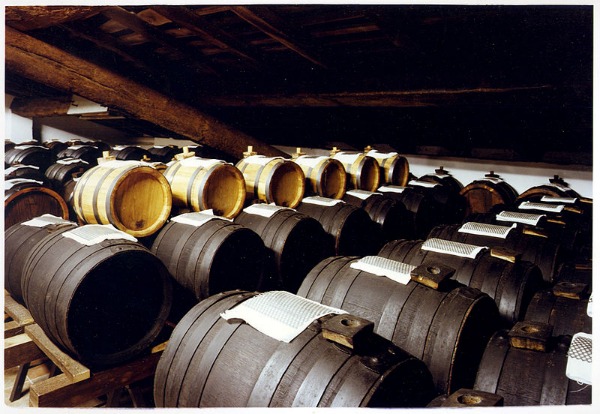
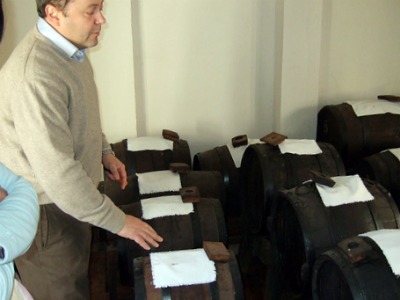 As mentioned, there are many balsamic vinegar producers in Modena and Reggio Emilia, and thankfully each city has a website for their consortium of balsamic makers. While the Modena name is more famous when it comes to balsamic vinegar, it’s the Reggio Emilia consortium site that’s more helpful for planning a DIY trip.
As mentioned, there are many balsamic vinegar producers in Modena and Reggio Emilia, and thankfully each city has a website for their consortium of balsamic makers. While the Modena name is more famous when it comes to balsamic vinegar, it’s the Reggio Emilia consortium site that’s more helpful for planning a DIY trip.
On the Reggio Emilia site there’s a link for the producers in the consortium. Some of the producers only have phone numbers listed, while others have email addresses, and still more have websites as well – you can browse the list and check out the individual websites of producers in the cities you’d like to visit to see which ones seem to be more well-equipped to accommodate visitors.
>> Reggio Emilia Balsamic Vinegar Consortium site, English version – click on “Producers” for the producers list
The Modena consortium’s site doesn’t have a similar list of producers and their contact information, unfortunately, but if you’re planning far enough in advance you can try contacting the consortium directly for information about producers that might be good options for your trip.
>> Modena Balsamic Vinegar Consortium site, English version – click on “Contact” to send consortium an email
When I visited an acetaia in 2004, I contacted the Acetaia Malpighi directly via email and set up a date and time when I would arrive for a tour. The tour consisted of just me and the husband, seeing the different rooms in the building where balsamic is aged in barrels blackened from years of use.
The tour culminated with a visit to the attic room where the last aging happens – the door to the attic was as thick as a bank safe, and the air inside the attic was thick with the smell of balsamic vinegar. Our feet stuck to the floor and we could smell balsamic in our nostrils for hours after leaving the small room – as the balsamic evaporates and concentrates, it simply hangs in the air and coats every surface of the room. It was stunningly strong, and (assuming you like balsamic) absolutely delicious.
Our tour also included samples of the products made by Acetaia Malpighi, including a white balsamic vinegar and a sort of balsamic jelly, as well as some balsamic aged 20+ years. Naturally, we bought some goodies to bring home, too.
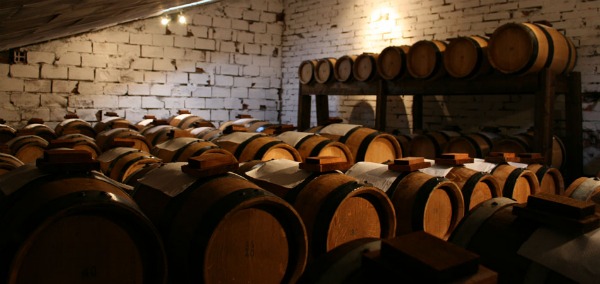
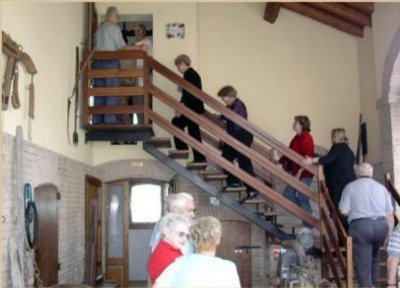 The Emilia-Romagna region is so famous for its food products that there are group tours you can join that are totally focused on food. As mentioned, some of the balsamic vinegar-related group tours will take you to several acetaie during a day trip, while others will include an acetaia along with a visit to a Parmigiano-Reggiano cheese maker or a prosciutto maker or both.
The Emilia-Romagna region is so famous for its food products that there are group tours you can join that are totally focused on food. As mentioned, some of the balsamic vinegar-related group tours will take you to several acetaie during a day trip, while others will include an acetaia along with a visit to a Parmigiano-Reggiano cheese maker or a prosciutto maker or both.
Doing an organized tour instead of a DIY tour is a good idea if you’d rather not worry about the transportation – especially given how remote some of these places can be – and if you’d like to make several food stops in one day with minimal hassle.
Here are a few options for organized tours that include balsamic vinegar makers:
photos, top to bottom, by: Balsamico1, Gilgilbo, sebrenner, Acetaia del Casato Bertoni site, Acetaia Medici site